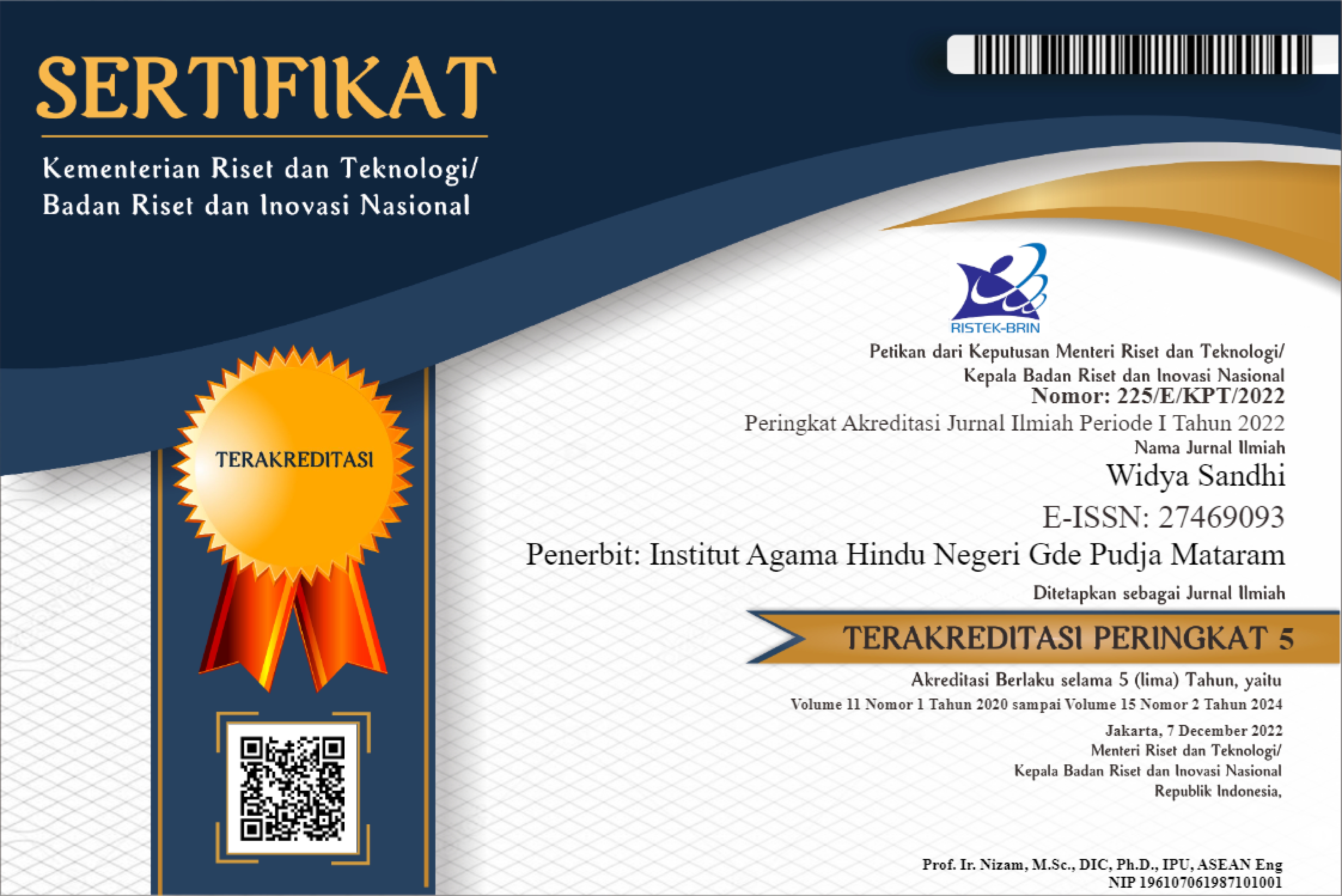ANALISIS STRUKTUR DAN KONSEP TEOLOGIS YANG TERMUAT DALAM LONTAR TUTUR GONG BESI
Abstract
This study aims to analyze the structure and theological concepts contained in Lontar Tutur Gong Besi, so that it can be used as knowledge for students, university students and the general public in the field of Hindu literature. The study in this study used descriptive qualitative with a literature study approach with data analysis techniques on relevant documents, especially analysis on the Lontar Tutur Gong Besi document. Based on the results of the interpretation of the Gong Besi Speech Lontar, it can be explained that the structure of the Lontar Tutur Gong Besi consists of a formal structure and a content structure. The formal structure includes the use of Balinese kawi language with antithesis, association, repetition, and antonomasia styles. While the content structure includes the storyline from the beginning, core and closing. The theological concepts contained in the Lontar Speech of the Iron Gong include Henotheism, Animism, and Monotheism. The Lontar Tutur Gong Besi is Siwaistic in nature. This lontar is included in the Lontar Tattwa Religion group, the main discussion in this lontar relates to the omnipotence of Bhatara Dalem. Balinese people believe that Bhatara Dalem is a manifestation of Lord Shiva.
References
Donder, I Ketut. (2009). Teologi.Surabaya: Paramita
Gautama, Wayan Budha. (2005). Tutur Gong Besi. Surabaya: Paramita
Siswantoro. (2005). Metode Penelitian Sastra: Analisis Psikologis. Surakarta : Muhammadiyah University Press.
Situmorang, Jonar. (2017). Mengenal Agama Manusia. Yogyakarta: Penerbit Andi
Wibawa, I Made Gadha. (2017). Tutur Gong Besi; Analisis Struktur Dan Fungsi. Jurnal Humanis, Fakultas Ilmu Budaya Unud.
Wijayanti, Atrianing Yessi. (2022). Terampil Membaca dan Menulis Puisi. Guepedia
Sumber Internet:
http://www.academia.edu/5885848/KE2._TEORI_DAN_APLIKASI_STRUKTURALISME

This work is licensed under a Creative Commons Attribution-NonCommercial-ShareAlike 4.0 International License.
Authors who publish with this journal agree to the following terms:
- Authors retain copyright and grant the journal right of first publication with the work simultaneously licensed under a Creative Commons Attribution-ShareAlike 4.0 International License. that allows others to share the work with an acknowledgment of the work's authorship and initial publication in this journal.
- Authors are able to enter into separate, additional contractual arrangements for the non-exclusive distribution of the journal's published version of the work (e.g., post it to an institutional repository or publish it in a book), with an acknowledgment of its initial publication in this journal.
- Authors are permitted and encouraged to post their work online (e.g., in institutional repositories or on their website) prior to and during the submission process, as it can lead to productive exchanges, as well as earlier and greater citation of published work (See The Effect of Open Access).






.jpg)




